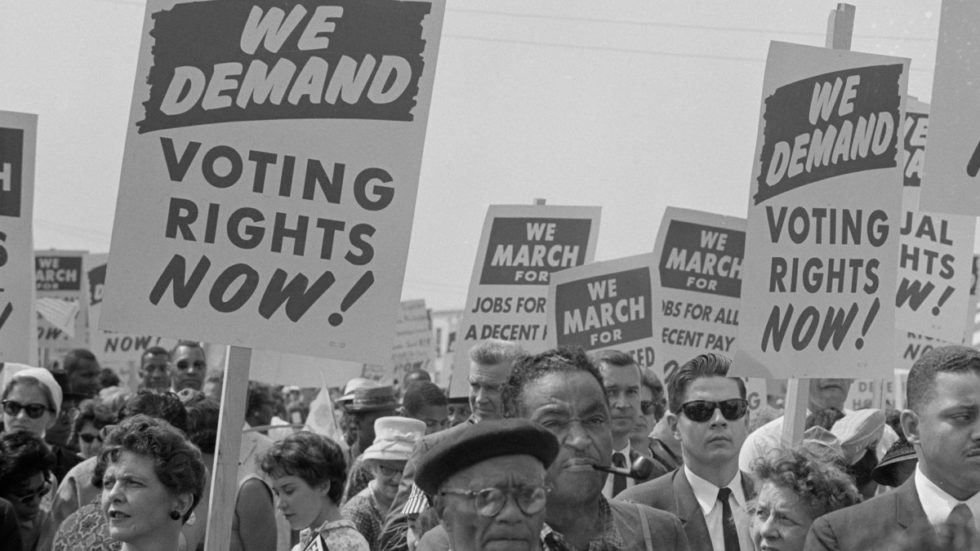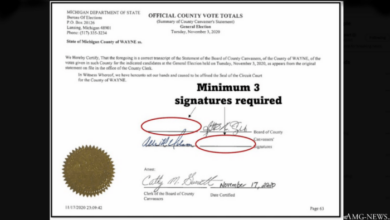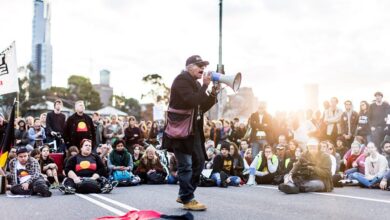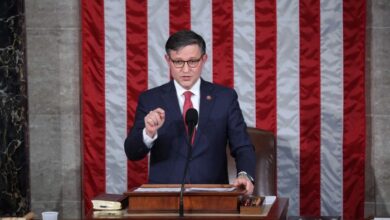
Why We Must Protect Voting Rights: A Foundation for Democracy
Why We Must Protect Voting Rights: A Foundation for Democracy. The right to vote is the cornerstone of any democratic society, a fundamental pillar that ensures the voices of the people are heard and their will is reflected in the government.
Throughout history, the expansion of voting rights has been a long and arduous struggle, marked by moments of progress and setbacks. From the fight for women’s suffrage to the Civil Rights Movement, the right to vote has been hard-won and continues to be under threat.
Today, we face new challenges to voting rights, from voter ID laws that disproportionately disenfranchise minority communities to gerrymandering, which manipulates electoral districts to favor one party over another. These threats undermine the integrity of our elections and erode public trust in our democratic institutions.
It is imperative that we stand up for the right to vote, ensuring that every citizen has an equal opportunity to participate in the democratic process.
The Foundation of Democracy
Voting rights are the cornerstone of a democratic society, empowering citizens to participate in shaping their government and holding their elected officials accountable. The ability to cast a ballot and have it counted fairly is essential for ensuring that the will of the people is reflected in the political system.
Historical Evolution of Voting Rights
The right to vote has not always been universally recognized or accessible. Throughout history, voting rights have been expanded and restricted based on various factors, including race, gender, and socioeconomic status.
- In the United States, for example, the right to vote was initially limited to white, male property owners. The 15th Amendment (1870) formally prohibited denying the right to vote based on race, but systemic barriers, such as poll taxes and literacy tests, continued to disenfranchise African Americans for decades.
The Voting Rights Act of 1965 was a landmark piece of legislation that finally outlawed these discriminatory practices and helped to secure voting rights for millions of African Americans.
- The 19th Amendment (1920) granted women the right to vote, marking a significant step towards gender equality. However, the fight for full voting rights for women continues in many parts of the world.
- The 26th Amendment (1971) lowered the voting age to 18, recognizing the right of young people to participate in the democratic process.
Impact of Voter Suppression
Voter suppression refers to any effort to prevent or discourage eligible voters from casting their ballots. These efforts can take many forms, including voter ID laws, purging voter rolls, reducing polling places, and restricting early voting.
“Voter suppression is a threat to our democracy. It undermines the fundamental right of all citizens to have their voices heard and to participate in the political process.”
Former President Barack Obama
Voter suppression disproportionately impacts marginalized communities, such as people of color, low-income individuals, and people with disabilities. It can lead to:
- Reduced voter turnout, particularly among those who are already underrepresented in the electorate.
- Distorted election results, as the voices of certain groups are silenced or marginalized.
- Erosion of public trust in the democratic process.
Threats to Voting Rights: Why We Must Protect Voting Rights
The right to vote is a cornerstone of any democracy. It allows citizens to participate in shaping their future and hold their leaders accountable. However, this fundamental right is under constant threat from various challenges, undermining the very foundation of democratic governance.
Voter ID Laws
Voter ID laws are a common tactic employed to restrict voting access. These laws require voters to present specific forms of identification at the polls, often disproportionately impacting marginalized communities. While proponents argue that these laws prevent voter fraud, studies have shown that voter fraud is extremely rare.
Critics argue that these laws are designed to suppress voter turnout, particularly among minority groups, students, and the elderly who may lack the required identification.
Gerrymandering
Gerrymandering is the manipulation of electoral district boundaries to favor a particular political party or group. This practice can create districts that are heavily skewed in favor of one party, leading to uncompetitive elections and reducing the representation of minority groups.
Disenfranchisement
Disenfranchisement refers to the systematic denial of voting rights to certain groups of people. This can take various forms, including voter suppression tactics like purging voter rolls, closing polling places, and restricting early voting. Disenfranchisement disproportionately affects marginalized communities, including people of color, low-income individuals, and people with disabilities.
The Role of Technology, Why we must protect voting rights
Technology has both the potential to protect and undermine voting rights. Online voter registration and electronic voting can make it easier for people to participate in the electoral process. However, technology can also be used to suppress votes, manipulate election results, and spread misinformation.
Every vote matters, and ensuring everyone has equal access to the ballot box is crucial for a functioning democracy. Recent events like the contentious primary in Idaho, where Governor Brad Little defeated his own Lieutenant Governor, highlighting the importance of robust voting rights and fair elections.
These events underscore the need to safeguard our democratic processes and ensure that every citizen’s voice is heard.
For example, the use of algorithms in social media platforms can create filter bubbles that reinforce existing biases and limit exposure to diverse perspectives.
The Importance of Accessibility
Voting is the cornerstone of a functioning democracy, but its effectiveness hinges on the ability of all citizens to participate. Accessibility is not just a matter of convenience; it’s a fundamental requirement for ensuring that every voice is heard and that every vote counts.
This means creating a voting system that caters to the needs of all individuals, regardless of their age, disability, or socioeconomic status.
Accessible Voting Systems
Creating a voting system that prioritizes accessibility and inclusivity is paramount to ensure that all citizens have the opportunity to exercise their right to vote. This includes considering the needs of individuals with disabilities, seniors, and those facing economic hardship.
Here are some examples of best practices and a hypothetical voting system that prioritizes accessibility:
- Early voting periods allow individuals with busy schedules or limited mobility to cast their ballots at their convenience. This is particularly beneficial for working individuals, caregivers, and those with transportation challenges.
- Absentee voting allows individuals to vote by mail, eliminating the need to travel to a polling place. This is especially helpful for seniors, individuals with disabilities, and those who live in remote areas.
- Accessible polling places should be equipped with ramps, elevators, and other features that make them accessible to individuals with disabilities. Additionally, polling places should be located in easily accessible locations with adequate parking.
- Voter registration should be simplified and streamlined, making it easier for individuals to register and participate in elections. This includes providing online registration options and extending registration deadlines.
- Language assistance should be provided at polling places and on voting materials, ensuring that individuals who speak languages other than English can understand the voting process and cast their ballots confidently.
A Hypothetical Accessible Voting System
Imagine a voting system where all citizens have equal access to the ballot box. This system would be designed with the following features:
- Universal Voter Registration:All citizens would be automatically registered to vote upon reaching the voting age, with the option to opt out. This would eliminate barriers to registration and encourage participation.
- Online Voting:A secure online voting platform would be available to all citizens, allowing them to cast their ballots from their homes or any location with internet access. This would eliminate the need for physical polling places and make voting accessible to those with mobility limitations or busy schedules.
Voting rights are the bedrock of a functioning democracy, allowing citizens to shape their future. Imagine a world where the cost of basic necessities like fuel skyrockets, as seen in the recent analysis, analysis sorry but for you oil trades at 250 a barrel.
In such a scenario, the ability to choose leaders who can address these challenges becomes even more critical. Protecting voting rights ensures that every voice is heard, and that the decisions made reflect the will of the people.
- Accessible Voting Materials:All voting materials, including ballots, instructions, and sample ballots, would be available in multiple formats, including braille, large print, audio recordings, and sign language interpretation. This would ensure that individuals with disabilities can understand and participate in the voting process.
- 24/7 Voter Assistance:A dedicated hotline and online chat service would be available to provide assistance to voters with any questions or concerns they may have about the voting process. This would ensure that voters feel supported and empowered to participate in the election.
- Accessible Polling Places:Physical polling places would be available for those who prefer to vote in person, and these locations would be designed to be fully accessible to individuals with disabilities. This would include features such as ramps, elevators, accessible restrooms, and designated parking spaces.
The Impact of Voter Participation
The strength of a democracy is intrinsically linked to the level of engagement of its citizens. Voter participation is a cornerstone of a healthy democracy, serving as a vital indicator of the public’s trust in the system and their willingness to actively shape their future.
High voter turnout signifies a vibrant and responsive democracy, while low participation can lead to apathy, disenfranchisement, and a disconnect between the electorate and their representatives.
Voter Turnout and Democratic Institutions
The relationship between voter turnout and the strength of democratic institutions is multifaceted and complex. A higher voter turnout generally indicates a more engaged and informed citizenry, which can lead to more representative and responsive governments. When a large segment of the population participates in elections, it strengthens the legitimacy of the elected officials and their decisions.
Protecting voting rights is crucial to ensuring a truly democratic society. It’s about safeguarding our voices and ensuring that every vote counts. And it’s clear that the GOP’s attempts to restrict access to the ballot box are a threat to our democracy.
As the saying goes, “the people have spoken” – and it seems that Mitch McConnell’s worst nightmare has come true, as Biden annihilates the GOP for wanting to raise your taxes here. This is a stark reminder of why we must fiercely protect our voting rights and ensure that every voice is heard.
Conversely, low voter turnout can indicate a lack of trust in the political system, a sense of apathy, or a feeling of powerlessness among certain segments of the population. This can lead to a disconnect between the elected officials and the will of the people, potentially resulting in policies that are not truly representative of the electorate’s needs and desires.
Factors Influencing Voter Participation
Several factors influence voter participation, including:
- Political Efficacy:This refers to the belief that one’s vote can make a difference in the outcome of an election. When citizens feel that their vote matters and that their voice is heard, they are more likely to participate. Factors like a perceived lack of political influence, disillusionment with the political system, or a belief that one’s vote won’t impact the outcome can lead to decreased voter turnout.
- Civic Engagement:Individuals who are actively involved in their communities, participate in civic organizations, and engage in political discourse are more likely to vote. Civic engagement fosters a sense of responsibility and ownership in the political process, encouraging citizens to participate in shaping their future.
- Media Coverage:The media plays a crucial role in shaping public opinion and influencing voter turnout. Extensive and unbiased coverage of elections, candidates, and issues can increase public awareness and encourage voter participation. Conversely, biased or limited media coverage can lead to a decline in voter turnout, as citizens may feel uninformed or disengaged.
Voter Turnout Rates Across Demographics
The following table compares voter turnout rates across different demographic groups and geographic regions, highlighting the disparities that exist:
| Demographic Group | Voter Turnout Rate (%) |
|---|---|
| White | 65.8 |
| Black | 59.6 |
| Hispanic | 49.2 |
| Asian | 47.1 |
| Urban Areas | 55.4 |
| Suburban Areas | 62.7 |
| Rural Areas | 68.3 |
“The right to vote is precious. It is the most powerful non-violent tool we have in a democratic society. And we must use it.”
John Lewis
Advocacy and Action
Protecting voting rights is not a spectator sport. It demands active engagement from individuals and organizations alike. We must translate our understanding of the threats and the importance of voting into concrete actions that safeguard this fundamental right.
Organizations and Individuals Championing Voting Rights
A robust network of organizations and individuals tirelessly work to protect and expand voting rights. These groups employ various strategies, from legal challenges to voter education initiatives, to ensure that every eligible citizen can exercise their right to vote.
- The Brennan Center for Justice:This non-partisan law and policy institute focuses on voting rights, campaign finance, and criminal justice reform. They provide legal expertise, conduct research, and advocate for policies that protect and expand voting rights.
- The American Civil Liberties Union (ACLU):The ACLU is a leading advocate for civil liberties, including the right to vote. They engage in litigation, public education, and advocacy to ensure that voting rights are protected for all.
- The National Association for the Advancement of Colored People (NAACP):The NAACP has a long history of fighting for voting rights and racial justice. They organize voter registration drives, monitor elections, and advocate for policies that eliminate barriers to voting.
- The League of Women Voters:This non-partisan organization works to promote informed and active participation in government. They advocate for fair election laws, educate voters, and conduct voter registration drives.
Strategies for Advocacy
Protecting voting rights requires a multifaceted approach that involves legal challenges, voter registration drives, and public awareness campaigns.
- Legal Challenges:Organizations like the Brennan Center and the ACLU file lawsuits to challenge discriminatory voting laws and practices. These legal battles are crucial for ensuring that voting laws comply with the Constitution and protect the right to vote.
- Voter Registration Drives:Organizations like the NAACP and the League of Women Voters conduct voter registration drives to ensure that eligible citizens are registered to vote. These drives are particularly important in communities where voter registration rates are low, often due to historical disenfranchisement.
- Public Awareness Campaigns:Raising public awareness about voting rights is essential. Organizations use public education campaigns to inform voters about their rights, the importance of voting, and how to navigate the voting process.
Call to Action: Engage in Protecting Voting Rights
Protecting voting rights is a shared responsibility. Here are some ways you can get involved:
- Register to Vote:Ensure that you are registered to vote and encourage others to do the same.
- Volunteer:Join a voting rights organization or participate in voter registration drives.
- Donate:Support organizations working to protect voting rights.
- Educate Yourself:Stay informed about voting rights issues and share your knowledge with others.
- Advocate for Change:Contact your elected officials and advocate for policies that protect and expand voting rights.
Conclusion

The right to vote is not just a privilege, it’s a responsibility. It’s the responsibility of every citizen to ensure that all voices are heard and that our democracy remains a beacon of freedom and equality. By staying informed, advocating for change, and participating in the electoral process, we can protect the right to vote and strengthen our democracy for generations to come.
The fight for voting rights is not over, but by working together, we can ensure that every voice is heard and that our democracy remains a vibrant and inclusive force in the world.






